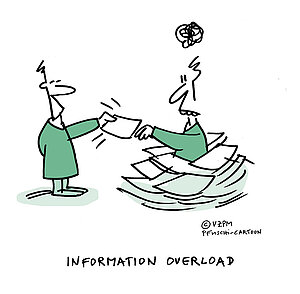Organisation and information
Definition
Organisation and information includes the definition, implementation and management of the temporary project organisation. Organisation and information also includes the definitions of required roles and responsibilities as well as effective information exchange for the temporary organisation. This competence element also includes the creation and storage of documentation, reporting structures and the project internal communication flows.
Purpose
The purpose of this competence element is to enable the individual to create a high-performing temporary organisation, which also includes the inseparable link between organisational structure and communication processes.
Description
This competence element describes how the project is organised. The organisation and information competence embraces both human resources and associated communication processes.
The organisation also covers the project’s roles, responsibilities and mandates on the various levels. Usually, it at least distinguishes between the sponsor level, the project level and the level of components. It describes the formal information flows between these levels, so that each level is able to take the assigned responsibility and base decisions on high quality information. Usually, the sponsor level is accountable for the definition of the objective and scope of the project and the project level is accountable for delivering quality outputs.
For all levels to achieve high quality decisionmaking, all levels should be supported by the right, timely, high quality information. The individual is responsible for information quality, timeliness and flow. Internal information, documentation and communication are closely related to the management of the organisation and encompass identifying information needs, establishing the required processes and information infrastructures and finally monitoring the internal and external information flow.
Key competence indicators
Assess and determine the needs of stakeholders relating to information and documentation
The individual knows about the close link between information and organisation and that needs for information may also determine the need for specific organisational structures. For example, in organisations practising outsourcing with one or more virtual teams, the need for a high level of information is evident. Care must be taken in deciding who gets what information – overwhelming people with too much information must be avoided. Interested parties in general should receive only the information they need and in a suitable form. The individual must discern the needs for formal and informal information/documentation. Knowing the corporate structures and processes will automatically outline part of the formal information and documentation (specifications, plans, budgets, reports and more). It is the responsibility of the individual to ensure that the information and organisational needs are defined.
Measures
- Assesses and documents the information and documentation needs of the project
- Establishes various modes of communication, including formal and informal
- Determines the project characteristics influencing the organisational needs
Define the structure, roles and responsibilities within the project
The individual can structure the temporary organisation in various ways and is aware of the influences from governance and contextual characteristics such as strategy, structures and processes, power and interest, standards and regulations, culture and values. Applied technologies, anticipated solutions, required competences and the geographical location of the participant will also have a high impact on the design of the organisational structure. The individual knows about the advantages and disadvantages of different structures and is also capable of designing, staffing and implementing the temporary organisation. If necessary, an appropriate governance framework and structure will be established for the project, as well as for all subordinate projects (if any). As part of this framework, roles and responsibilities are clearly defined and decision-making authorities and delegation levels are also identified.
Measures
- Explains some fundamental ways to structure a temporary organisation
- Designs and develops a governance framework and structure
- Defines the responsibilities of the various key personnel on the project
- Identifies links to and interfaces with corporate governance arrangements
- Identifies and records the differences between the organisation’s functional authorities and the project’s authorities
Establish infrastructure, processes and systems for information flow
The individual knows how to establish communication processes including roles and responsibilities and all rules and guidelines for what internal information to communicate and how. Additionally, appropriate systems and methods are implemented to support the governance arrangements. How to limit and/or prevent redundant information is a key success criterion for establishing efficient information processes – and information must be consistent and unambiguous. Information infrastructures cover the systems, means and methods required for documenting, storing and communicating the internal information. Information infrastructures and IT are inseparable in a modern organisation and consequently, being aware of the corporate IT systems and policies is important for the individual.
Measures
- Explains the purpose and contents of information processes
- Communicates internal information via various methods
- Ensures redundant information is limited and/or prevented
- Explains the benefits of different types of meetings
- Explains what is covered by an infrastructure for communication
- Establishes planning and control mechanisms (e.g. documentation of key decisions)
Implement, monitor and maintain the organisation of the project
The individual knows how to manage the project organisation, including implementation, monitoring and maintenance of the temporary organisation. Implementation means to make the initially defined organisational structure operational – to make it work. However, implementation also includes changes to the organisation when necessary. The need for changes to the temporary organisation should be anticipated as the project evolves. Any given structure of an organisation is valid only for a limited period of time. In particular, changes in contextual factors (such as strategy and/or power and interest) tend to influence the temporary organisation and call for changes or minor adjustments. Through the ongoing monitoring of the project’s environment, the individual has to proactively envisage the need for changes to the temporary organisation.
Measures
- Implements new organisational structures
- Monitors the organisation, including the roles involved
- Adjusts the organisation, including the roles involved


